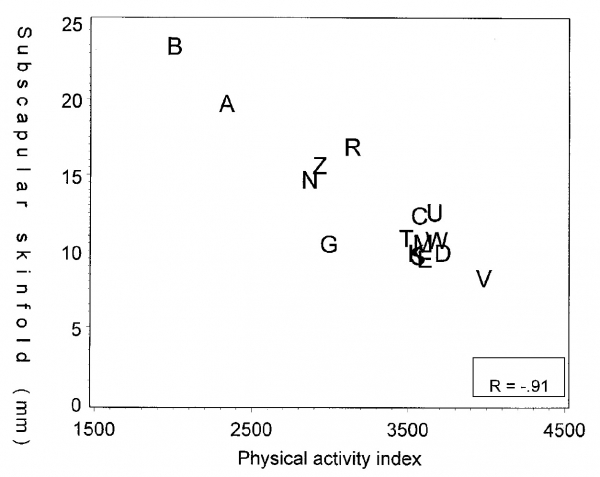A cross-sectional analysis on survey data collected in 16 cohorts of middle-aged men in the 1960s showed that the average population index of occupational physical activity was strongly inversely related (R= -0.91) to the average population subscapular skinfold thickness, an indicator of total body fat. Average dietary fiber intake was also inversely associated ecologically, but weaker (R = -0.51), with average subscapular skinfold. Average dietary fat intake was not significantly correlated ecologically with average subscapular skinfold. Collectively, average population physical activity of occupation and dietary fiber intake explained 90% of the variance in body fat.

Relation between population average physical activity index and subscapular skinfold thickness in the Seven Countries Study around 1960 in men aged 40 ± 59.
Interpretation
In the 1960s, under different cultural circumstances than today, average population physical activity was strongly related to physical activity on the job. At that time, recreational physical activity did not play an important role in mostly rural cohorts. Nowadays, with mechanization of labor and transport, leisure time physical activity is much more representative of overall activity than occupational physical activity. Dietary fiber is also an independent correlate of body fat. This suggests that increased physical activity and intake of dietary fiber may prevent obesity in a population.
